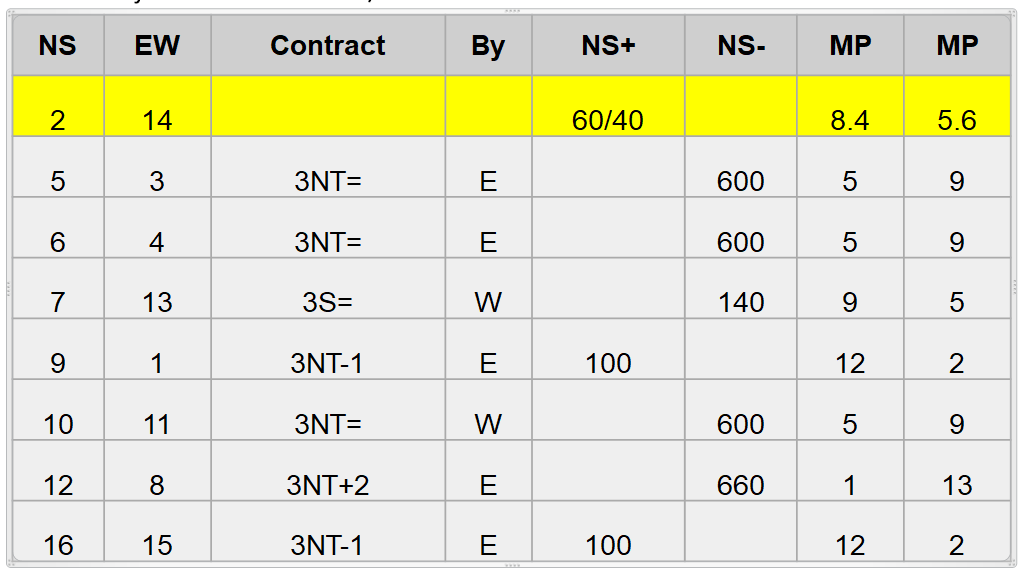Applying law 78A when there is an artificial adjusted score.
This is an image showing how to score when there is an artificial adjusted score.
Law 78A states: "two scoring units for each score inferior to his, one scoring unit for each score equal to his, and zero scoring units for each score superior to his."
Yet each score has had 1 added to it.
I can see why, what I don't see is where the laws allow this. Why not make it out of 12 since 6 other pairs have recorded results? The 60/40 would of course then be of 12, not of 14.
Or is the image wrong?

Comments
Isn't this because of the issue with equal weighting/value of boards towards the overall score?
So, a top on a 'normal' board would be 14MP, but a top on this board would only be 12MP.
In addition, if the 60/40 rules gives 8.4 and 5.6MPs, why is that out of 14MP and not 12, giving 7.2 and 4.8?
Shouldn't this technically be the scoring of a sub-field of results? Each table should have 7 comparisons and have only had 6, through no fault of their own.
What has been used here is a simple scoring solution (normally applied when being scored manually), which assumes that the 'missing' result would have been a tie for that pair and so score an additional MP.
A more usual system when computer scoring is to utilise the Neuberg formula, the results would be a little different for the pairs not awarded artificial scores: such that 12 v 8 would score: 13.86 and 0.14; 9 v 1 and 16 v 15 would score: 12.71 and 1.29 etc
Simple match pointing will add 1 to the other score for each artificial score.
Neuberg scoring (the recommended method) will factor the the frequences and increase the gap between each match point award.
See White Book 4.1
Thanks, Robin